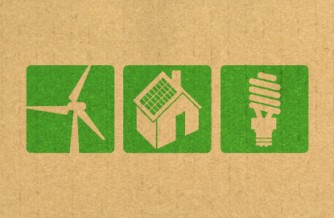 ?When there are fires, tsunamis or storms like Sandy, hotels are used as a base because people consider them a safe place to be? They tend to be a backup for the community when people have no other place to go? stated David Jerome, senior VP of corporate social responsibility for InterContinental Hotels Group.?8
?When there are fires, tsunamis or storms like Sandy, hotels are used as a base because people consider them a safe place to be? They tend to be a backup for the community when people have no other place to go? stated David Jerome, senior VP of corporate social responsibility for InterContinental Hotels Group.?8
The Rocky Gap Lodge and Southampton Inn discounted their rates so Hurricane Sandy victims could afford to have a warm bed to sleep in.1?Sunrise Senior Living offered their communities to older adults and their pets.?2?It is estimated that 30,000-40,000 people will temporarily need a safe haven.?7
I am inspired by this show of generosity. However, the analyst side of me cannot help but wonder about the increase in overhead due to the combination of inclement weather and reduced room rates.?What kind of negative affect will this have on the bottom line? Energy expenses are second only to labor costs when considering a hotel?s operating budget.?3
How can hotels and other hospitality environments quickly and easily reduce their energy expenses without affecting guests? What economical changes can be made to offset the reduction in room rates against the increase in guests and energy costs?
?In a typical lodging facility, lighting, space heating, and water heating represent close to 60 percent of total use, making those systems the best targets for energy savings.??7
Below, I offer some suggestions:
1. Peripheral and back rooms. Make sure that HVAC settings in lobbies, offices, and other such peripheral rooms are at minimum settings during hours of low use.?4
2. Laundry. Set laundry hot water temperatures to 120? Fahrenheit. This is a good temperature for all hot water uses outside of the kitchen.?4
3. Pools and hot tubs. Make sure that all pools and hot tubs are covered after hours to diminish heat loss. Covering a heated pool can save 50 to 70 percent of the pool?s energy use, 30 to 50 percent of its makeup water, and 35 to 60 percent of its chemicals.?4
4. Housekeeping procedures. Encourage housekeepers to turn off all lights and set temperatures to minimum levels after cleaning each room. Closing drapes when a room is unoccupied will reduce heat gain in the summer and heat loss in the winter.?4
5. Front desk. Teach registration staff that they can help save energy costs by booking rooms in clusters, so that only occupied building areas or wings need to be heated or cooled to guest comfort levels. Rooms on top floors, at building corners, and facing west (in summer) or north (in winter) can be the most energy-intensive to heat or cool; therefore, consider renting them last.?4
6. Computers and office equipment. A computer monitor can use two-thirds of the total energy of a desktop system, so it is important to power down monitors whenever they are not in use. (You can shut off your monitor after a set period of inactivity via the Power Settings in your computer.)?4
7. Hallway lighting. If hallways have skylights or other natural light and your lighting has dimming capabilities, dim those lights by 30 percent during daytime hours.?4
8. Guest service options. Some lodging facilities offer guests the option of forgoing daily linen changes or nightly turndown service. Some guests may not perceive a need for daily sheet and towel replacement or for lights, radios, or televisions to be turned on for them when they are not in the room.?4
9. Hotel kitchens and laundries can be the most energy-intensive areas by square footage. If you stagger start-up times for meal preparation, you can reduce peak demand charges.6
In the kitchen, food preparation equipment should not be turned on for preheating more than 15 minutes before it is needed; simply reducing the operating time of kitchen appliances can cut cooking-related energy consumption by up to 60 percent.?4
10. Replace incandescent lamps with compact fluorescent lamps.? CFL?s use 66% less energy than incandescent lamps and they last four times longer.5
11. Look for water leaks. Common areas for them are ?toilet systems, piping joints, pump seals, hose nozzles, shutoff valves (solenoids and float) and cooling systems.?
Test for leaking toilets by adding some food coloring to the tank. Make sure you do not flush the toilet for an hour or so. If the dye shows up in the bowl after that period of time, then you know there is a leak.?9
Remember to enlist the assistance of your staff. Tell them you need their help and give them all the common goal of reducing energy expenses. Then, let them loose. Publicly hand out small awards to those who come up with the best ideas. Remember that failure is okay when being innovative (don?t make me quote Edison here!).

